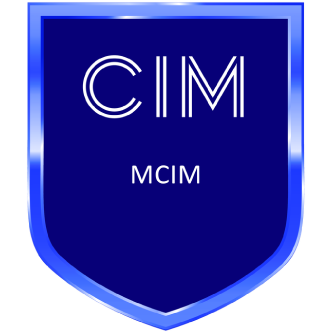Integrated marketing is so much more than a trend. It’s the way of the future. And the team at Forbes agree. They wrote an article on why integrated marketing is the way of the future and how it can support overall organisational success. We’d love to know what you learn from the article- let us know by leaving a comment on LinkedIn.

Our Key Takeaways
- Integrated marketing is the way of the future for businesses of all sizes.
- A SWOT analysis can help to identify marketing opportunities (this is a tool we utilise in planning meetings with our clients).
- Consistency and messaging are key- get these right and the rest of the campaign with follow.
- Utilise technology to support your marketing efforts.
Never Miss an Edition of The Roundup
The Roundup is your fortnightly digital marketing tip, trick, or trend from the Somer Design Team. Sign up to never miss an edition: https://somerdesign.activehosted.com/f/7
The Article: Why Integrated Marketing is the Future
Today’s marketers find themselves in an incredibly complex environment. Traditional marketing models have broken down, fragmentation is rampant, and the fight for relevance depends on adopting a model equal to the challenges ahead.
As marketers face mounting revenue pressure, a dizzying diversity of customers, markets, channels, and products, decreasing budgets, and siloed organisations, research conducted by NewsCred and other forward-thinking marketing minds shows what we at Zen Media have known for a long time: an integrated marketing approach is fast becoming the model of the future.

Why this approach matters.
As the name suggests, integrated marketing is an approach that brings coherence to the complexity and fragmentation that increasingly characterises the marketing world. Specifically, integrated marketing refers to the process of aligning and coordinating a marketing organisation to deliver a consistent, seamless, customer-centric content experience across all channels.
Since content is the common currency of every market and consumer touchpoint, integrated marketing increases operational efficiency and drives superior performance through collaboration. The business case for integrated marketing is the shift from becoming a competitive player to a profit powerhouse.
The power to outperform.
As a testament to the power of integrated marketing, research conducted by Gartner has found that Integrated campaigns across 4+ channels outperform single or dual-channel campaigns by 300 percent. Amplifying a consistent message drives value, and according to Kantar Millward Brown, integrated campaigns are 31 percent more effective at building brands.
The fight is real.
These kinds of numbers beg the question of why more marketing organisations haven’t adopted an integrated approach? In more than a decade of partnering with marketing organisations in order to help them achieve integration, this is the short answer I’ve come up with: The fight is real.
We have met the enemy, and it is us.
Though it’s easy to blame the complexity lying outside our organisations as the chief obstacle standing in our way, the foremost challenge to building an integrated marketing organisation is internal. Said differently, we have met the enemy, and it is us.

Competition is not the answer.
The enemy to integration that lies within our own organisation is internal competition stemming from once-functional divisions within and between teams to handle multi-channel challenges. But with multi-channel rapidly giving way to omnichannel, silos based on specific channels are serious liabilities and active areas of dysfunction, and integration is mission critical.
How can we overcome the enemy to integration within our own organisations? The solution lies in the key shift from a culture of competition to a culture of collaboration. With decreased competition comes increased collaboration, and with increased collaboration comes increased organisational integration and customer-centricity.
Six milestones for building an integrated marketing organisation.
- Secure executive sponsorship and cross-functional buy-in. Without dedicated executive sponsorship and cross-functional buy-in, an integrated marketing organisation is a non-starter. (And leaders who cater to silos need to understand that their refusal to adopt an integrated approach is actively enabling their competition.)
- Assemble a cross-functional team tasked with integrating the organisation. If you’re a leader in your organisation, find champions and cross-functional leaders who will support you. If you’re a champion, find like-minded colleagues and recruit an executive who can help drive the initiative for integration.
- Conduct a SWOT analysis. At this stage, the idea is not necessarily to find solutions but to uncover key issues and challenges across the team and with stakeholders in order to get on the same page. It’s especially important to identify hidden silos (which can show up as unduly narrow areas of specialisation) and other barriers to collaboration.
- Proceed with collaborative planning that’s guided by a unifying big idea. Collaborative planning needs to be guided by a big idea that serves three functions. First, this big idea should center around dynamic storytelling and serve as your north star. Second, it should be ambitious, purposeful, and aligned with your brand values. Last, it should inspire a range of brand assets, activations, and a variety of content tailored to different audiences and channels. Every activity done by everyone in your organisation should be informed by and lead back to this big idea.
- Implement holistic workflows. Holistic workflows provide the cross-functional transparency and clarity that accelerates quality content production through coordinated execution. Every piece of content needs to have its own distinct yet clearly interlinked workflow in the production process. This includes everything from ideation to sign-off and approval to compliance review and so on. At Zen Media, this means we create an inventory of all content types that exist in our organisation. We then map the stages and production cycle for each content piece, prescribe checkpoints, assign tasks, and determine ideal timeframes required for completion. Throughout the process, we take great care to delineate clear roles and responsibilities and to actively include stakeholders and any third parties.
- Support your efforts with integrated technology stack. Technology is a major force in enhancing the coordination needed to overcome silos and achieve high levels of collaboration. Ideally, marketing tech stack should support digital marketing, lead generation, and multi-channel campaigns. Integrated tech stack is a sign of an organisation’s maturity since it allows channel communications and metrics to be automated.
This article was originally published by Forbes





